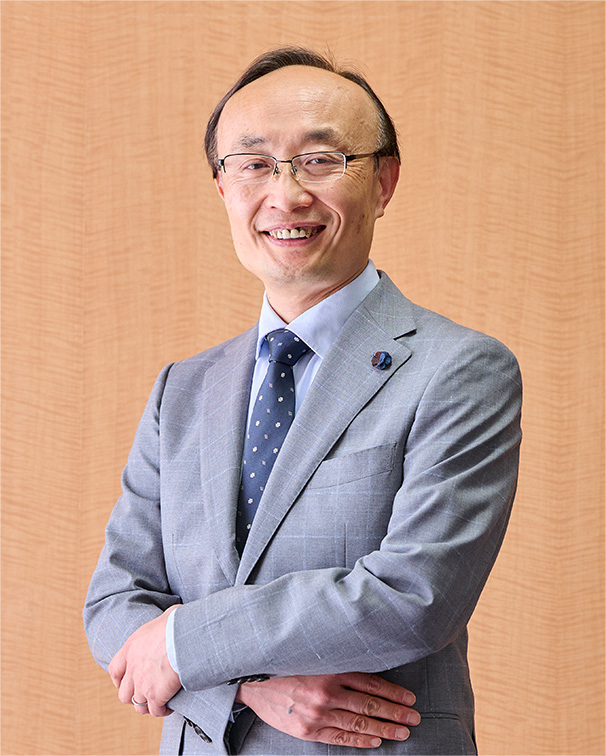質の高い医療安全教育を取り入れるために

齋藤 貴之
「医療安全」は「医学分野」に限定されるものではなく、保健、介護、福祉などを含む教育全体に大きく広がります。また、医療や職場の安全は「安全専門家」だけでなく、すべての現場の職員によって築かれるものです。近年、「医療安全」の概念が拡充し、事故防止だけでなく、質改善や日常業務の効率的・効果的・柔軟な遂行により成功を増やすことが広義の「医療安全」と見なされるようになりました。また、「医療安全」は理論だけでなく、実践的なスキルや組織全体の文化を通じて構築されます。
質の高い安全な医療を提供するためには、医療に関わるすべての人が安全に関する基本的知識、スキル、態度を育成する必要があります。WHO患者安全カリキュラムに示されているように医療安全教育の基本項目は、医療安全体制やインシデント報告等に関する理解のみならず、人間工学、システム思考、チーム医療に必要なノンテクニカルスキル、質改善手法などを含みます。これらの資質・能力は、組織全体のパフォーマンス向上にも応用できるものです。
WHOが患者安全カリキュラムガイドを発表してから10年以上経過しましたが、医療安全教育は国際的にもまだ十分に実施されているとは言えません。WHO患者安全行動計画は、その理由として、①教員が医療安全教育に慣れていない、②既存のカリキュラムが過密で、医療安全教育を取り入れることに消極的であること、③医療技術や医療体制の急速な発展に対応した教育の不備を指摘しています。
2023年、群馬大学は医療安全教育手法に基づく多職種人材育成共同利用拠点に認定されました。WHO等の国際標準の医療安全教育手法に基づいて、全国の多職種の人材育成に関わる教職員の皆様に多職種の人材育成に関わる教員に対して、医療安全教育手法のFD(ファカルティ・ディベロップメント)を行います。
私たちが提唱する医療安全教育手法は以下のとおりです:
- 安全を狭義の「事故防止」に限定せず、組織全体のパフォーマンス向上として教育する視点と手法。
- 教育項目に、従来の医療安全項目に加え、人間工学、システム思考、チーム医療に必要なノンテクニカルスキル、質改善手法などを含めて教育すること。
- 既存カリキュラムに安全教育を組み込むこと(例:基礎実習の中でノンテクニカルスキルを、外科実習の中で安全課題を教育するなど)。
- 可能な限り、多職種連携教育アプローチを取り入れること。
現在の医療安全教育は、医学科、看護学科など各専門領域で個別に実施されており、職種間の連携は不足しているのが現状です。医療安全教育においても多職種の連携・協働が望まれます。
医療安全教育に取り組んでいる皆様、これから取り組まれる皆様に、職種を超えて利用していただけるハブとしての役割に取り組んでまいります。
皆様のご支援とご協力をどうぞよろしくお願いいたします。
To incorporate quality patient safety education

Takayuki Saito
The importance of “patient safety” is not limited to the “medical field,” but also covers a wide range of areas, including health, nursing care, welfare, and education. Patient safety and workplace safety are built by all frontline personnel, not just safety professionals. In recent years, the concept of “patient safety” has broadened to include not only accident prevention, but also the improvement of quality and success rates through efficient, effective, and flexible execution of daily operations. In addition, “patient safety” is built not only through theory, but also through practical skills and organization-wide culture.
In order to provide quality and safe healthcare, all healthcare providers need to develop basic knowledge, skills, and attitudes about patient safety. As shown in the WHO Patient Safety Curriculum Guide, basic patient safety education includes not only an understanding of patients safety systems and incident reporting, but also ergonomics, systems thinking, non-technical skills necessary for team work, and quality improvement methods. These qualities and abilities can be applied to improve the performance of the entire organization.
Although it has been more than a decade since the WHO published its Patient Safety Curriculum Guide, patient safety education has not yet been fully implemented internationally. The WHO Patient Safety Action Plan points to the following reasons for inadequate patient safety education: 1) faculties are not familiar with patient safety education, 2) existing curricula are overcrowded and reluctant to incorporate patient safety education, and 3) education is inadequate to keep pace with rapid developments in medical technology and healthcare systems.
In 2023, Gunma University was certified as a joint usage center for human resource development of multiprofessionals based on patient safety education methods. We provide faculty development (FD) of patient safety education methods to faculty involved in multi-professional human resource based on “international standard patient safety education methods such as WHO guidelines.
The patient safety education methods we advocate are as follows
- Perspectives and methods that do not limit safety to “accident prevention” in the narrow sense, but educate as performance improvement for the entire organization.
- Patient safety education should include ergonomics, systems thinking, non-technical skills necessary for teamwork, quality improvement methods, etc., in addition to conventional patient safety items
- Incorporating safety education into existing curricula (e.g., teaching non-technical skills during basic training and safety issues during surgical training)
- Incorporate interprofessional educational approach whenever possible.
Currently, patient safety education is often conducted separately in each specialty area, such as medicine and nurse, and there is a lack of collaboration among professions. This center will serve as a hub to enable collaboration among multiprofessionals.

